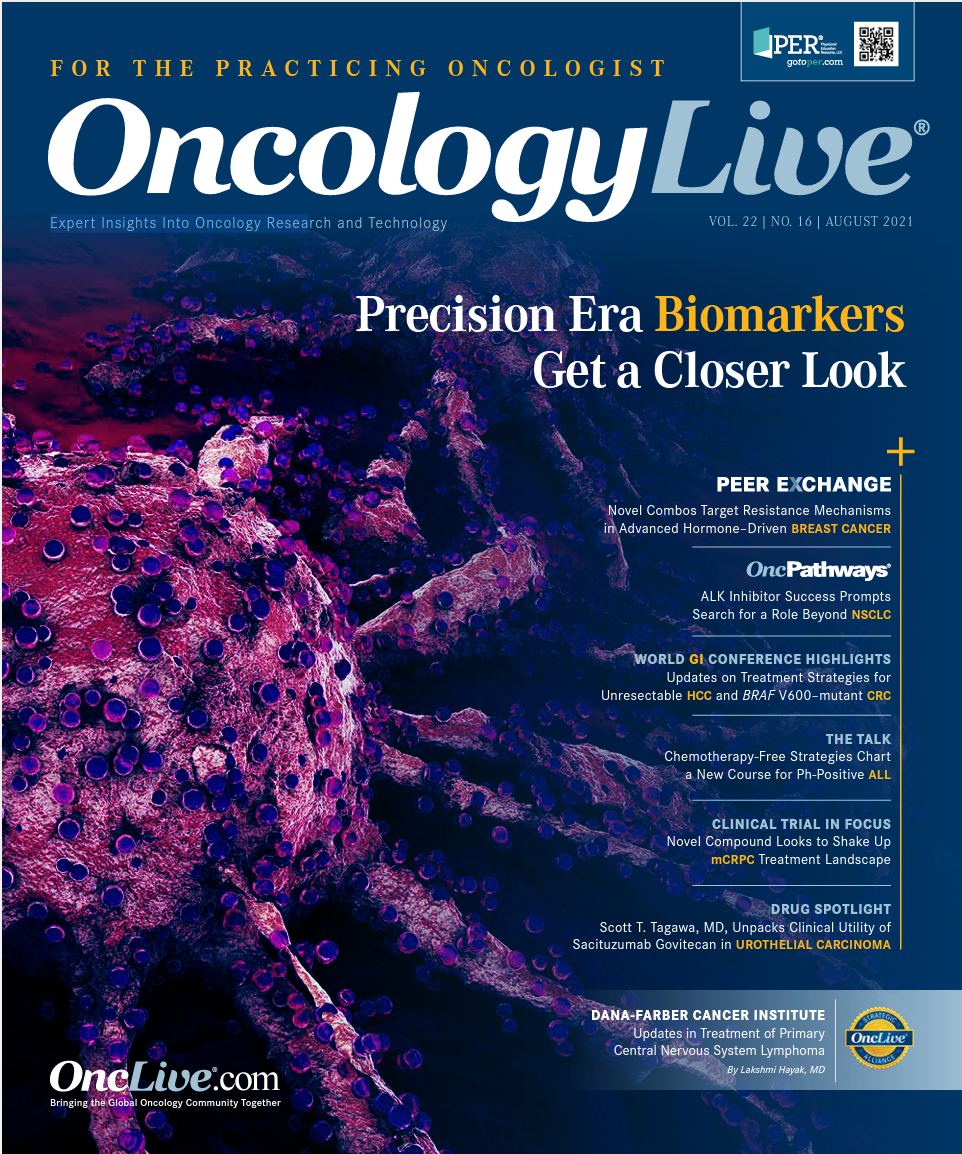Misinformation on Cancer Prevention Stems from COVID-19 Communication Efforts
One year ago, few objective observers would have suggested that the percentage of individuals who are currently fully vaccinated is less than 30%, despite the well-documented real-world success data for the vaccines in preventing serious illness, hospitalizations, and death from COVID-19 infection.
Maurie Markman, MD

One year ago, few, if any, objective observers would have suggested that our country would be faced with a situation where 30% to 40% of the adult population in the United States were seriously hesitant, apathetic about, or essentially refusing to receive one of the 3 COVID-19 vaccines approved by the FDA. Of the more than 3000 counties that comprise the US, the percentage of individuals who are currently fully vaccinated is less than 30%,1 despite the well-documented real-world success data for the vaccines in preventing serious illness, hospitalizations, and death from COVID-19 infection.2,3
Evidence supports the benefits of the approved vaccines against the far more infectious delta COVID-19 variant, and those currently unvaccinated are facing an increasing risk if infected in the absence of a complete vaccine program.4 Additionally, recent data for individuals requiring hospitalization because of COVID-19 have confirmed the potentially devastating effect of the event, with approximately half of patients experiencing serious complications, including those younger than 60 years.5
The scientific evidence of benefit and overall safety data of the vaccines are overwhelming, but these data have been and continue to be insufficient to overcome a variety of objections, misconceptions, and profound misinformation regarding the products. Consider, for example, the observation that despite a rapid increase in the number of cases in the region, only one-third of individuals in Baxter County, Arkansas, are immunized and only half of the staff of Baxter Regional Medical Center have received the vaccine.6
This example emphasizes the remarkably disturbing situation in the US, where objective scientific data related to the COVID-19 pandemic are increasingly politicized. Although some have attempted to vastly oversimplify the situation, vaccine hesitancy may have far more to do with underlying philosophical perspectives than with the science itself.
Specifically, observers have acknowledged a focus on personal choice—the right to be left alone—vs responsibility to others in a group. This perspective is consistent with a rejection of both mask and vaccine mandates. There is also a deep-seated objection by certain individuals to government or academic elites who may appear condescending to ordinary citizens in their rhetoric, pronouncements, and proposed/mandated regulations. Conversely, those in favor of vaccination may have a stronger philosophical focus on a personal responsibility to assist others within society.
However, despite the admitted limitations of these broad generalizations, evidence supports the general conclusion that, although these perspectives are not absolute nor do they adequately characterize all or even most individuals within the 2 dominant political parties in the US, past voting patterns have followed personal decisions regarding vaccination against COVID-19.
Again, in the opinion of this commentator, the apparent differences in the reluctance of many to be vaccinated noted above make a critical statement about highly personal beliefs regarding the role of government and its agencies as well as the pronouncements of experts in decisions to be made about the health and welfare of the individuals and their own families rather than a statement regarding acceptance of the role and value of science in their lives.
Finally, frequently changing recommendations by government officials and public health leadership (ie, masks vs no masks indoors or for children in schools; how many people can attend an indoor or outdoor sporting event; who makes these decisions, etc), as well as the understandable but most difficult suggestion that vaccinated individuals should be treated differently from the unvaccinated individuals, has served only to intensify feelings and beliefs that further polarize the population.
Now the question must be asked: What is the relevance of the above discussion to cancer management and major public health initiatives designed to reduce the burden of malignant disease? A recent example from Tennessee demonstrates the severity of the current situation as it relates to vital cancer prevention efforts. It was recently reported that the health officials there ordered the discontinuation of specific outreach to adolescents for all approved routine vaccines, including HPV vaccination, following pressure from certain members of the legislature regarding efforts by the health agency to encourage COVID-19 vaccination.7
This statement needs to be repeated: Health officials in the state of Tennessee have, at least temporarily, halted essential efforts that have been documented to prevent the ultimate development of cervical cancer and other HPV-associated malignancies, which includes more than half of all head and neck cancers in the US. Does it need to get scarier than this for the entire cancer establishment to demand the reversal of this decision and to hopefully prevent such ill-informed and dangerous decisions in the future?
References
- Wood S, Schulman K. When vaccine apathy, not hesitancy, drives vaccine disinterest. JAMA. 2021;325(24):2435-2436. doi:10.1001/jama.2021.7707
- Angel Y, Spitzer A, Henig O, et al. Association between vaccination with BNT162b2 and incidence of symptomatic and asymptomatic SARS-COV-2 infections among health care workers. JAMA. 2021;325(24):2457-2465. doi:10.1001/jama.2021.7152
- Precautions ease as Delta variant spreads, driving up cases. News at a glance. Science. 2021;373 (6551):140-141. doi:10.1126/science.373.6551.140
- Planes D, Veyer D, Baidalouk, et. al. Reduced sensitivity of SARS-CoV-2 variant Delta to antibody neu-tralization. Nature. Published online ahead of print July 8, 2021. doi:10.1038/s41586-021-03777-9
- Drake TM, Riad AM, Fairfield CJ, et al; ISARIC4C investigators. Characterization of in-hospital com-plications associated with COVID-19 using the ISARIC WHO Clinical Characterization Protocol UK: a prospective, multicentre cohort study. Lancet. 2021;398(10296):223-237. doi:10.1016/S0140-6736(21)00799-6
- See how vaccinations are going in your county and state. New York Times. Updated August 2, 2021. Accessed August 3, 2021. nytimes.com/interactive/2020/us/covid-19-vaccine-doses.html
- Bella T, Villegas P. Tennessee resumes most vaccine outreach to minors paused after GOP backlash. The Washington Post. July 24, 2021. Accessed August 3, 2021. washingtonpost.com/health/2021/07/23/tennessee-vaccine-outreach-children-gop/




